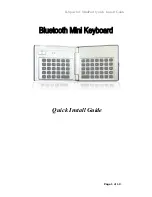
The PHA
II
and PHA
III
keyboards
translate the emotions
of the player into sound
Their natural touch is not produced by springs, but instead by the
hammer’s weight and movement. Just as in an acoustic piano,
the lower notes feel slightly heavier and the higher notes feel
lighter. The PHA
II
and PHA
III
keyboards also faithfully replicate
the unique response of grand pianos, where the keys move
downward lightly when you play softly and give more resistance
when you play more forcefully.
The “SuperNATURAL Piano sound engine”
delivers the power and expression
of an acoustic grand
Both HPi-7F and HPi-6F are with our newly developed
SuperNATURAL Piano sound engine, which was born by bringing
together V-Piano technology and 88-key stereo multisampling.
This new sound engine is the product of Roland’s deep research
of the characteristics of acoustic pianos, with the goal of faithfully
reproducing the rich tone and true expression of a concert grand
piano. 128-voice polyphony ensures seamless performance, even
during the most dense and complex pieces.
Perfect touch and response in every key
Each note of a grand piano has its own character, due to the
fact that the strings are different sizes and lengths, use different
materials, and are struck by hammers of different sizes. These
differences create variations in the tonal color and resonance of
each note. For the new SuperNATURAL Piano sound engine, we
sampled all 88 notes of a variety of world-class pianos and used
our unique digital technology to accurately reproduce the full, rich
tone and unique personality of these fine acoustic instruments.
True to the player’s touch
Pianos produce myriad differences not only in volume, but also
in tone based on how forcefully the key is struck. Our latest
technology, the SuperNATURAL Piano sound engine, delivers
natural and seamless changes
in tonal color in response
to the player’s touch. The
expanded dynamic range
supports the most advanced
and subtle techniques, just
as one would expect from an
acoustic grand piano.
Seamless note decay
The natural decay of notes and beautiful lingering tones are
essential elements of a piano’s sound. The decaying sound of
an acoustic piano not only
decreases in volume, but
also gradually changes in
color to a softer tone. The
SuperNATURAL Piano sound
engine replicates this natural
decay, just like an acoustic
grand.
Inspiring creativity
with Roland’s powerful technologies
Both HPi-7F and HPi-6F feature “Piano Resonance”, which
faithfully reproduces the sympathetic resonance*
1
between
strings, as well as other subtle nuances such as variations in
lingering tones based on key-release speed*
2
. It even replicates
the resonance one hears while the damper pedal is depressed
and the dampers move off the
strings*
3
. The HPi-7F and HPi-
6F also offer “Piano Designer”,
which lets you customize all
components of the piano’s
sound, even the position of
the “virtual” grand piano lid*
4
.
*1 String Resonance *2 Key Off Resonance
*3 Damper Resonance *4 HPi-7F only
Continuous detection pedals respond
to the player’s sensitivities
The damper and soft pedals continuously detect the slightest
differences in the amount they are depressed, thus supporting
a full range of pedal expression. For example, there are subtle
changes in tone where the damper is barely touching the string,
when you release the pedal gradually. There are also variations
in the sustain of a sound when you depress the pedal gradually.
The pedals even support the most subtle expression, such as
depressing the pedal again after releasing it for an instant.
pp
p
mp
mf
ff
f
Variation in tone color produced by
the SuperNATURAL Piano sound
engine with heavier touch.
*The graph and drawings are artistic illustrations
Volume
Time
Natural variations in tonal quality
Variation in tone color produced by the
SuperNATURAL Piano sound engine as the
tone decays.
*The graph and drawings are artistic illustrations
SOUND
TOUCH
4
Содержание HPi-6F
Страница 1: ...ROLAND PIANO DIGITAL...


























